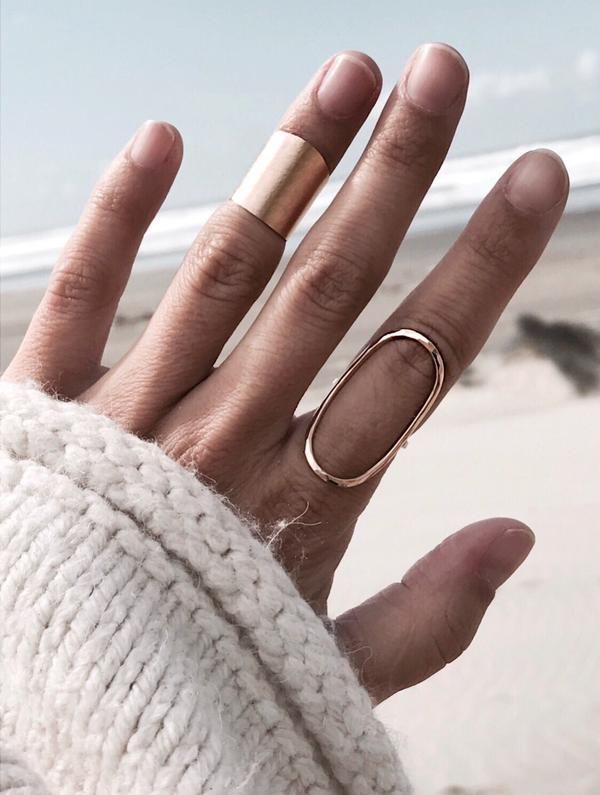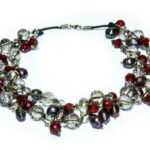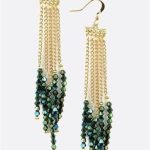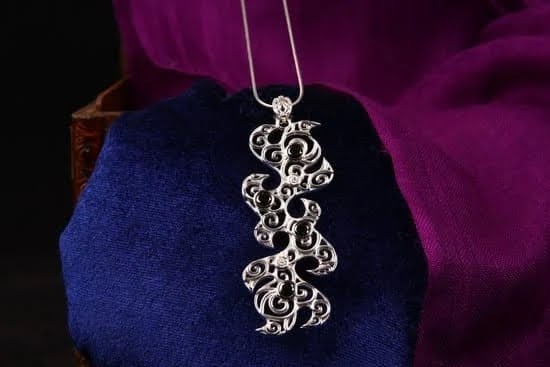Art Deco, with its bold geometric shapes, intricate designs, and vibrant colors, remains an iconic period in art and design. During this time, jewelry took on a new form of expression, reflecting the modernity and glamour of the era. One notable aspect of Art Deco jewelry is the prevalence of synthetic stones.
These man-made gems, although not naturally occurring, were favored by jewelry designers for their versatility and aesthetic appeal. In this article, we will delve into why synthetic stones were so popular in Art Deco jewelry and explore their impact on the overall aesthetics and accessibility of these timeless pieces.
The Art Deco era emerged in the 1920s as a response to the industrial advancements and changing societal values of the time. This movement embraced simplicity in form yet exuded opulence through intricate detailing and luxurious materials. Jewelry from this era was no exception; it was characterized by its use of bold colors, clean lines, and symmetrical patterns. To achieve these striking visual effects, jewelers turned to synthetic stones.
Synthetic gemstones offered numerous advantages over their natural counterparts that made them highly desirable to Art Deco jewelers. First and foremost, they provided greater design possibilities due to their uniformity in size, shape, and color. With natural gemstones, designers often had to compromise on certain aspects or carefully select stones that matched perfectly in order to achieve symmetry in their creations. Synthetic stones eliminated that concern by offering consistent characteristics across each stone.
Additionally, synthetic stones allowed for more affordable options without compromising on visual impact. Natural gemstones were precious commodities that were often limited in supply and expensive to acquire. Synthetic stones provided an accessible alternative that allowed individuals from different backgrounds to embrace Art Deco jewelry trends without breaking the bank. The affordability factor contributed greatly to the widespread popularity of both Art Deco jewelry overall and the use of synthetic stones within it.
Art Deco Era
The Art Deco era, which spanned from the 1920s to the early 1940s, was a time of great innovation and creativity in art and design. It was characterized by sleek lines, geometric shapes, and a bold sense of style that defined the period. This movement influenced various forms of art, including architecture, fashion, and jewelry design.
One of the key characteristics of Art Deco jewelry was its use of synthetic stones. These man-made gemstones gained popularity during this time for several reasons. Firstly, they provided an affordable alternative to natural gemstones, making jewelry more accessible to a wider range of people. Secondly, synthetic stones allowed for greater design flexibility and experimentation with bolder colors and shapes.
Synthetic stones were created using advanced technology that replicated the chemical composition and visual properties of natural gemstones. Some of the most common synthetic stones used in Art Deco jewelry include cubic zirconia, synthetic sapphires, and synthetic rubies. These stones offered a range of vibrant colors that perfectly complemented the bold aesthetic of Art Deco designs.
The use of synthetic stones in Art Deco jewelry also helped overcome certain limitations faced by designers. Natural gemstones can have flaws or imperfections that may affect their durability or desirability for certain designs. Synthetic stones, on the other hand, can be produced with a consistent quality and durability, ensuring that every piece of jewelry met the high standards set by the Art Deco movement.
Overall, the use of synthetic stones in Art Deco jewelry played a significant role in shaping its aesthetic appeal and accessibility. By offering more affordable options while maintaining visual beauty and durability, these man-made gemstones allowed individuals from different social classes to enjoy stylish and fashionable pieces during this iconic era.
| Synthetic Gemstone | Advantages |
|---|---|
| Cubic Zirconia | – Affordable alternative to diamond
|
| Synthetic Sapphire | – An array of vibrant colors that perfectly complemented Art Deco designs
|
| Synthetic Ruby | – Greater availability in various sizes, shapes, and colors
|
The Rise of Synthetic Stones
Synthetic stones played a significant role in the popularity of Art Deco jewelry during the 1920s and 1930s. This section will delve into the origins of synthetic stones and explore the advantages they offered to jewelry designers of the time.
The development of synthetic stones can be traced back to the late 19th century, when scientists began experimenting with creating gemstones in a laboratory setting. These lab-grown stones were created using materials with similar chemical compositions as natural gemstones, but under controlled conditions that allowed for more consistent color and clarity. This new technology provided an accessible alternative to rare and expensive natural gemstones.
One of the key advantages of synthetic stones was their affordability. In an era marked by economic uncertainty, many people were drawn to Art Deco jewelry for its beauty and style, but could not afford to purchase pieces adorned with precious natural gemstones. Synthetic stones offered a more affordable option without compromising on aesthetics. Additionally, since synthetic stones could be produced in large quantities, they became readily available and accessible to a wider range of consumers.
| Advantages | Origins |
|---|---|
| Affordability | Development in late 19th century |
| Consistency in color and clarity | Laboratory settings |
| Increased availability for wider audience | Accessible alternative to natural gemstones |
Aside from their affordability, synthetic stones also offered designers greater creative freedom. Natural gemstones are limited by their availability and characteristics dictated by nature, whereas synthetic stones could be created with specific qualities in mind. Jewelry designers could experiment with different colors, sizes, and cuts of stones to achieve the desired look for their Art Deco pieces. This allowed for bolder and more innovative designs that were distinctive of the Art Deco era.
Aesthetics vs. Authenticity
During the Art Deco era, jewelry designers faced a dilemma when it came to choosing between aesthetics and authenticity. With the rise of synthetic stones, however, they were able to achieve both by incorporating these man-made gems into their designs. This section will explore how synthetic stones allowed for bolder designs in Art Deco jewelry.
Aesthetic Appeal of Synthetic Stones
One of the main reasons why synthetic stones were popular in Art Deco jewelry was because of their aesthetic appeal. These man-made gemstones offered a level of consistency in color and clarity that natural gemstones often lacked.
Moreover, synthetic stones could be created in a wide range of vibrant colors that were not readily available in nature. This allowed jewelry designers to experiment with bold and striking color combinations that perfectly complemented the geometric and angular lines characteristic of Art Deco design.
Unleashing Design Creativity
By using synthetic stones, jewelry designers were no longer limited by the availability or cost of natural gemstones. This newfound freedom gave birth to innovative and avant-garde designs during the Art Deco era.
Designers could incorporate larger stones without breaking the bank, creating eye-catching pieces that made a statement. The use of synthetic stones also allowed for precise cutting and shaping techniques, resulting in intricate patterns and elaborate settings that enhanced the overall visual impact of Art Deco jewelry.
Boldness without Sacrificing Durability
Another advantage that synthetic stones offered was their durability compared to some natural gemstones prone to wear or scratching over time. Jewelry designers could confidently create large and intricate pieces using synthetic stones without worrying about compromising their structural integrity or limiting wearability. This allowed for bolder designs with more substantial settings, adding an air of confidence to Art Deco jewelry’s overall aesthetic.
In summary, thanks to the introduction of synthetic stones during the Art Deco era, jewelry designers had the opportunity to embrace bolder designs without sacrificing aesthetics or authenticity. The availability of these man-made gems allowed for a greater range of color options, unleashed design creativity, and provided durability for larger and more intricate pieces. This combination of factors contributed to the lasting appeal and timeless beauty of Art Deco jewelry.
Overcoming Limitations
During the Art Deco era, jewelry designers faced numerous challenges when it came to creating pieces adorned with synthetic stones. While these man-made gems provided the opportunity for bolder and more vibrant designs, they also presented limitations that designers had to overcome in order to achieve their creative vision. In this section, we will delve into the various challenges faced by jewelry designers during this time.
Availability and Variety of Synthetic Stones
One of the primary challenges that jewelry designers encountered was the limited availability and variety of synthetic stones. Unlike natural gemstones, which are formed over millions of years in nature, synthetic stones were manufactured in laboratories using chemical processes. As a result, there were only a handful of companies producing these stones, which meant that designers had a limited selection to choose from. This constraint forced them to think creatively and make the most out of the available options.
Quality and Durability
Another hurdle faced by jewelry designers was ensuring the quality and durability of synthetic stones. While natural gemstones have stood the test of time, synthetic stones were relatively new on the market during the Art Deco era. Consequently, there were concerns about their longevity and ability to withstand regular wear. Jewelry designers had to find ways to guarantee that their creations would not only be visually appealing but also durable enough to withstand daily use.
Matching Natural Gemstones
It was not uncommon for jewelry pieces in the Art Deco era to incorporate both natural gemstones and synthetic stones. In such cases, one significant challenge was matching the color and brilliance of natural gemstones with those of their synthetic counterparts.
Natural gemstones have unique variations in color and clarity due to their formation process, whereas synthetic stones could be made consistently with specific colors and qualities. Designers thus had to experiment with different cuts, settings, and combinations while striving for cohesion between natural and synthetic stone components.
Overall, jewelry designers during the Art Deco era had to navigate various limitations and challenges in incorporating synthetic stones into their creations. Despite these hurdles, they successfully created stunning pieces that embraced the bold aesthetics of the time while showcasing impeccable craftsmanship.
Economic Factors
During the Art Deco era, economic factors played a significant role in the popularity of synthetic stones in jewelry design. The Great Depression had a profound impact on the global economy, causing financial hardships for many people. As a result, luxury items such as diamonds and other precious gemstones became less affordable for a wider audience. This created a need for alternative materials that could still offer the same beauty and glamour but at a fraction of the cost.
Synthetic stones, also known as imitation or simulated gemstones, provided an accessible solution for jewelry designers and consumers alike. These stones were manufactured in laboratories using various materials and processes to mimic the appearance of natural gemstones. By utilizing synthetic stones, jewelry designers could achieve the same sparkle, color, and elegance found in high-end jewelry pieces without the hefty price tag.
Additionally, the production of synthetic stones was relatively inexpensive compared to mining and cutting natural gemstones. With reduced costs involved in manufacturing these stones, jewelry makers could create larger and more elaborate pieces at a lower cost than using authentic gemstones. This affordability factor made Art Deco jewelry more accessible to a wider range of people who desired to own glamorous pieces during challenging economic times.
Overall, economic factors played a crucial role in driving the popularity of synthetic stones during the Art Deco era. These man-made gems offered an affordable alternative to genuine gemstones without compromising on beauty or quality. By making Art Deco jewelry more accessible to a wider audience, synthetic stones became an important element in shaping not only the aesthetics but also the cultural significance of this iconic period in art and design history.
Swinging the Fashion Pendulum
During the Art Deco era, the influence of this iconic period extended beyond the realm of jewelry design and had a significant impact on fashion trends as a whole. Art Deco jewelry played a key role in the reinvention of jewelry aesthetics, introducing bold and innovative designs that deviated from traditional styles. This section explores how Art Deco’s influence swung the fashion pendulum and led to the reimagining of jewelry trends.
One key aspect that set Art Deco jewelry apart was its focus on geometric shapes and clean lines. The linear and symmetrical motifs were not only incorporated into the design of jewelry pieces themselves but also influenced other elements of fashion, such as clothing and accessories. Women started to embrace sleek, tailored silhouettes and outfits adorned with geometric patterns or embellishments that echoed the aesthetic principles of Art Deco.
To fully embrace the modernity and innovation of this era, designers began experimenting with unconventional materials, including synthetic stones. These stones offered advantages such as affordability, durability, and versatility in terms of color options. Their use allowed for bolder designs that pushed boundaries both aesthetically and technically. With vibrant colors like emerald green, sapphire blue, ruby red, and amethyst purple becoming popular choices for synthetic stones, they added a burst of vibrancy to Art Deco jewelry pieces.
The reinvention of jewelry trends during the Art Deco era was not only fueled by aesthetic preferences but also by social changes taking place at the time. The 1920s marked a shift towards liberation for women who were increasingly involved in public life, including work outside their homes.
This newfound sense of freedom translated into a desire for more daring fashion choices that reflected their changing roles in society. The boldness and modernity of Art Deco jewelry perfectly aligned with this cultural shift and became symbolic of independence, confidence, and progressiveness.
Overall, Art Deco’s influence on the reinvention of jewelry trends was profound and far-reaching. It not only changed the aesthetics of jewelry design but also influenced fashion as a whole. The emphasis on geometric shapes, clean lines, and bold color choices paved the way for a more modern and progressive approach to jewelry. Art Deco became synonymous with innovation and sophistication, setting the stage for future trends in the world of fashion and design.
The Legacy of Synthetic Stones in Art Deco Jewelry
Art Deco jewelry is widely appreciated for its bold and geometric designs, but one of the key factors that made it truly stand out was the use of synthetic stones. These man-made gems played a significant role in shaping the aesthetic of Art Deco jewelry and continue to be an important aspect of its modern-day appreciation.
One of the main reasons why synthetic stones became popular during the Art Deco era was their versatility. Natural gemstones were often limited in terms of their availability and sizes, which posed significant challenges for jewelry designers who wanted to create large, attention-grabbing pieces.
Synthetic stones provided a solution by being more consistent in quality, color, and size. This allowed designers to experiment with bold compositions and innovative designs that would have been difficult to achieve with natural gemstones alone.
Moreover, synthetic stones offered an opportunity for affordable luxury. The economic prosperity during the Art Deco era led to an increased demand for fine jewelry, but not everyone could afford natural gemstones. Synthetic stones made it possible for a wider range of people to own exquisite pieces that resembled high-end jewelry without the hefty price tag. This accessibility factor further contributed to the popularity of synthetic stones in Art Deco jewelry.
While synthetic stones were praised for their advantages, they also faced criticisms from purists who valued authenticity above all else. Some critics argued that using man-made gems diminished the value and charm of Art Deco pieces.
However, it is important to note that many collectors and enthusiasts today celebrate the allure of synthetic stones as a distinctive characteristic of Art Deco jewelry. The unique colors and clarity achieved through these man-made gems have a timeless appeal that continues to captivate art connoisseurs worldwide.
Rediscovering Art Deco Jewelry
Art Deco jewelry is renowned for its timeless beauty and elegance. With its geometric shapes, bold colors, and intricate craftsmanship, it continues to capture the hearts of collectors and enthusiasts alike. However, it can be challenging to identify authentic pieces from the era due to the rise in reproductions and imitations. In this section, we will provide you with some helpful tips on how to determine the authenticity of Art Deco jewelry.
One important aspect to consider when identifying Art Deco jewelry is the materials used. During this era, platinum was highly favored due to its strength and ability to enhance gemstones’ brilliance. Genuine Art Deco pieces often utilize platinum metal settings or marks such as “PLAT” or “PT” engraved on them. Additionally, keep an eye out for hallmarks like French eagles or British crown symbols that indicate the piece’s country of origin.
The design elements are also crucial in determining whether a piece is truly Art Deco. Look for clean lines, symmetrical patterns, and geometric shapes such as rectangles, triangles, or circles. The use of vibrant colored gemstones like emeralds, sapphires, and rubies set alongside contrasting diamonds is another characteristic that defines Art Deco jewelry. Pay attention to details like engraving work or milgrain edges that were popular during this period.
Furthermore, examining the construction quality can provide valuable insights into a piece’s authenticity. Fine craftsmanship is a hallmark of genuine Art Deco jewelry. Assess the precision of stone settings if they are secure and well aligned as it speaks to the skill level involved in making these pieces by hand. Also, check for signs of wear over time which would be expected in antique pieces.
By being able to identify authentic pieces from the era through material usage, design elements, and construction quality, you can build your collection with confidence. Remember to consult with reputable jewelers or experts if you’re uncertain. With the right knowledge and keen eye, you can truly appreciate and cherish the unique beauty of Art Deco jewelry from a bygone era.
Conclusion
In conclusion, the use of synthetic stones in Art Deco jewelry holds a timeless appeal that continues to captivate collectors and enthusiasts alike. The Art Deco era was a time of innovation and revolution in design, and the rise of synthetic stones allowed for bolder and more daring creations. These stones not only provided new aesthetic possibilities but also addressed the economic factors that shaped the accessibility of jewelry during this period.
Synthetic stones offered advantages over their natural counterparts, such as uniformity in color and size. This consistency allowed designers to experiment with vibrant hues and geometric shapes, resulting in pieces that were truly distinctive and eye-catching. Additionally, the durability and affordability of synthetic stones made Art Deco jewelry more accessible to a wider audience.
However, it is important to note that the prevalence of synthetic stones did face some challenges. Designers had to overcome limitations such as fragility and difficulty in achieving certain cuts or textures. Nonetheless, these obstacles did not deter them from pushing boundaries and creating exquisite pieces that reflected the spirit of the Art Deco movement.
Today, the legacy of synthetic stones in Art Deco jewelry lives on through modern-day appreciation and critiques. Collectors value these pieces not only for their historical significance but also for their enduring beauty. While there may be debates surrounding authenticity, one cannot deny the lasting impact that Art Deco jewelry with synthetic stones has had on fashion trends and design.
To fully appreciate art deco jewelry, it is essential to learn how to identify authentic pieces from this era. Paying attention to specific design elements, such as geometric patterns, symmetrical compositions, and use of common materials can help distinguish genuine pieces from reproductions or imitations.
Frequently Asked Questions
What stones are used in Art Deco jewelry?
Art Deco jewelry incorporates a wide variety of stones, with a particular focus on vibrant and bold colors. Some of the commonly used precious and semi-precious stones in this style include diamonds, emeralds, rubies, sapphires, onyx, jade, and coral.
These stones were often cut in geometric shapes such as baguettes or triangles to enhance the angular design elements of Art Deco pieces. Additionally, glass and enamel were also utilized to achieve vibrant hues and intricate detailing in Art Deco jewelry.
What were the trends in Art Deco jewelry?
The trends in Art Deco jewelry were heavily influenced by the cultural shifts of the 1920s and 1930s. One prominent trend was the use of bold geometric shapes and clean lines that reflected the rise of industrialization during the era. This geometrical aesthetic often featured zigzags, sunbursts, chevrons, and other angular motifs.
Another notable trend was an emphasis on symmetry and balance in jewelry designs. Additionally, abstract patterns inspired by ancient Egyptian, Native American, and Asian art also became popular during this period.
What are the characteristics of art deco Jewellery?
Art Deco Jewelry is characterized by its distinctive style which encompassed several key features. The overarching theme is one of modernity and luxury combined with geometric precision. Symmetry is highly valued in art deco designs which often feature repetitive patterns and motifs.
Geometric shapes like circles, squares, rectangles are used dynamically to create sharp lines and angles that evoke a sense of sleekness. Furthermore, art deco jewels generally aimed for opulence through their choice of gems – bold colors such as emeralds or rubies are often paired with contrasting diamond accents for striking visual effect. Craftsmanship was highly valued during this period leading to exquisite details such as intricate filigree work or milgrain edges often found on these pieces.

Welcome to my jewelry blog! My name is Sarah and I am the owner of this blog.
I love making jewelry and sharing my creations with others.
So whether you’re someone who loves wearing jewelry yourself or simply enjoys learning about it, be sure to check out my blog for insightful posts on everything related to this exciting topic!





